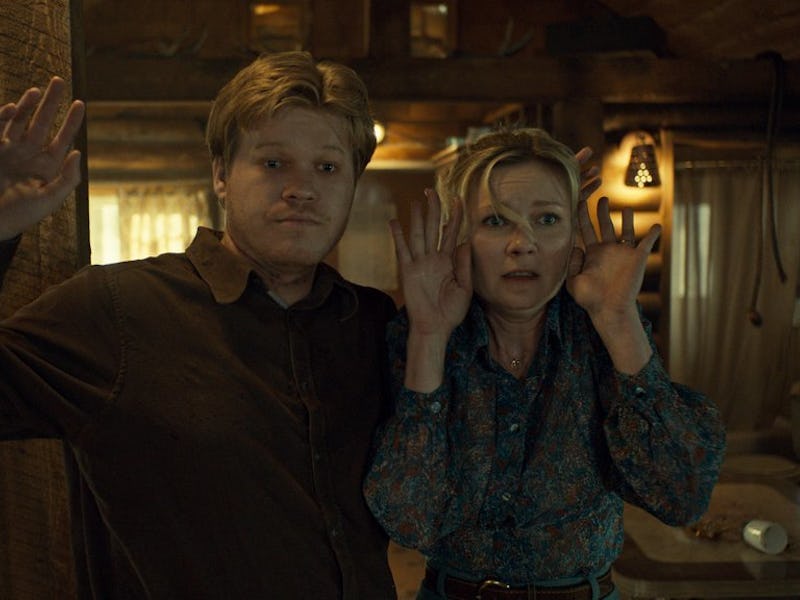Peggy Blomquist, and Delusion vs. Mental Illness in 'Fargo'
Last night's 'Fargo' gave us the most full-bodied characterization of Peggy we've seen yet.

“This lady has lost her mind, brother. She’s seein’ people who are not there.” Dodd Gerhardt says to Ed, looking veritably horrified. This is at the beginning of the episode, when Ed returns to their house to find Peggy talking to air (a hallucinated Lifespring coach) in front of a imprisoned Dodd. Throughout much of last night’s episode, in fact, Dodd reserves his looks of horror — looks we’ve never seen from him before on the show — for Peggy, who is a merciless jailer.
“Loplop” is the episode that forces us to address the question — more than even her inexplicable running-down of Rye, the hoarding of the salon’s toilet paper, or her flagrant disregard for Lou’s final warning — of whether Peggy, even among a cast of so many idiosyncratic or cold-blooded characters, is more insane than anyone else. Is Noah Hawley depicting mental illness outright with Peggy? Her obsession with the Lifespring seminar has started to seem less like the vague, out-of-reach dream of fleeing to Moscow in Chekhov’s rural-set plays, and more like an item of fixation for someone who is “on the spectrum.”
Increasingly, it seems to be a lot more complicated than a clinical issue. Peggy is forced to exist in a disordered frontier world, and as she grows older, it seems like it has come to realize that it doesn’t exactly suit her ambitions and worldview. Even if those ideas are befuddled, their primary thrust is clear: up, up, and away, towards a better and more honest relationship with herself.
Peggy, watching the fake Reagan flick
Also, she holds her own in this difficult terrain. Potential readings of the Blomquists unlikely survival as the result of dumb luck are far too shallow, and would do a disservice to the care Noah Hawley has taken drawing his characters. We’ve seen with clarity that Ed can be wily and vicious when defending his turf and family. He always seems to surprise himself with his own instincts. But earlier in the show, Peggy’s old razor-sharpness is often mixed up in what seems to be delusional psychosis, making her actions harder to parse and her internal life hard to speculate about. She’s the show’s most enigmatic character, especially after the racist underpinnings of Mike Milligan’s relationship with his organization were clarified last week.
In “Loplop” — which centers around the Blomquists’ last big play for freedom — we see a bit of all the supposedly contradictory things that Peggy is. Even as her sadistic side comes out — the sudden, dead-eyed shanking of Dodd — we sense that it is, in some sense, an expression of understandable pent-up aggression. Peggy is the character on the show who places closest to what we commonly define as insanity, but as the circumstances with which she has to deal become more intense, her behavior seems to make more and more sense.
With her cry of being happy to be “rolling” and free toward the beginning of the episode, we get the impression that this is truly where she wants to be: in some situation out in the open, not confined, with the potential for change. Thus the somewhat pedestrian implication: Was Peggy ever broken, or was it the restrained, over-polite facade of Minnesota living? What suits the Solversons and even Ed might not be good enough for Peggy.
It will be in some sense rewarding to see the Blomquists brought to justice — mostly because of their conduct to Hank and Lou, that thoughtless stubbornness that has resulted in so many bodies. However, Hawley has finally made it clear that we should not view this as a cowardly sociopath and her delusional husband being finally dressed in chains. By now, all the normal, Coens-esque moral ambiguities are firmly in place.